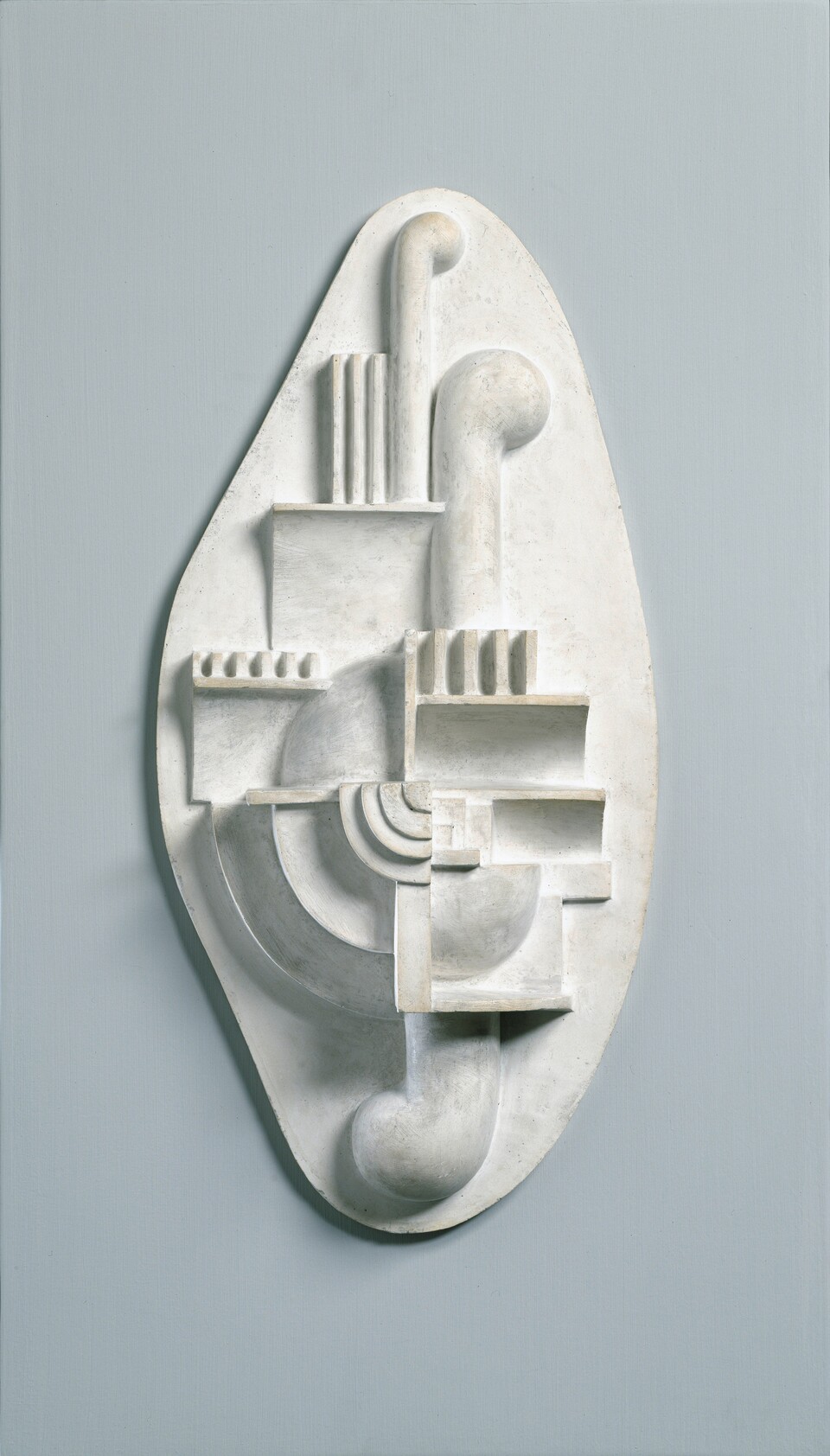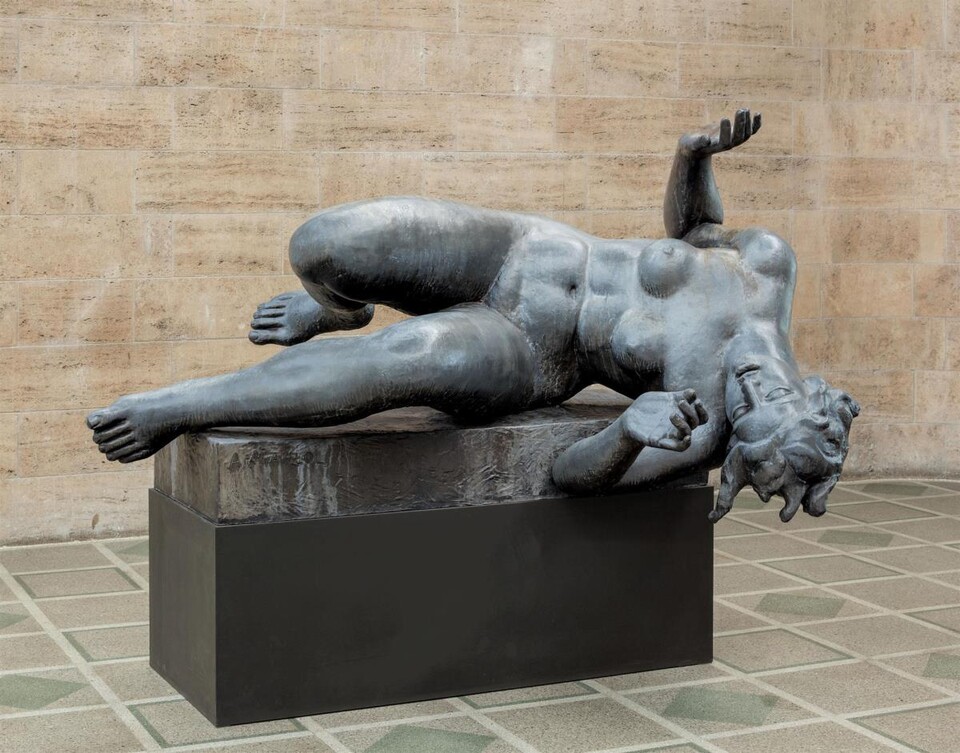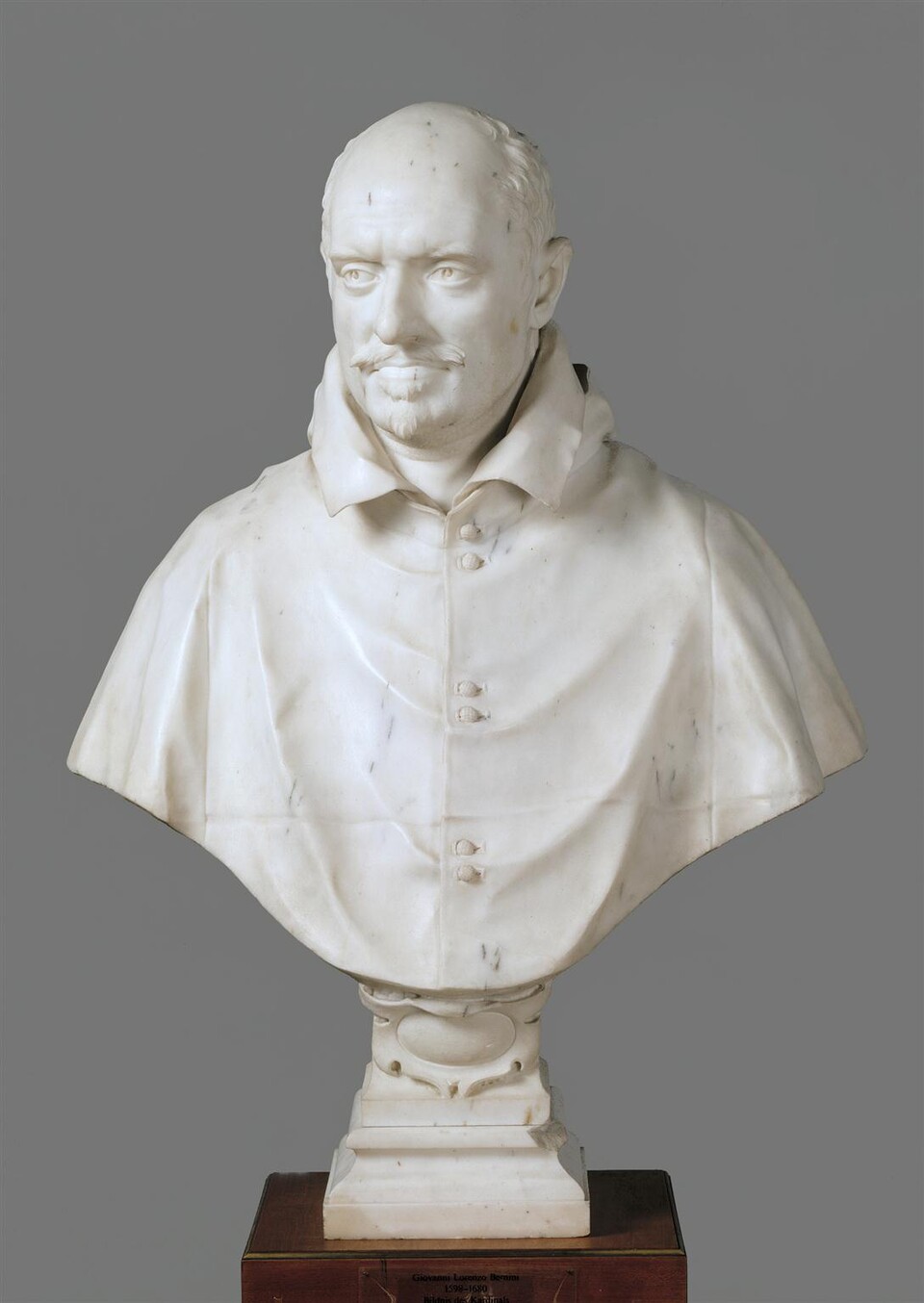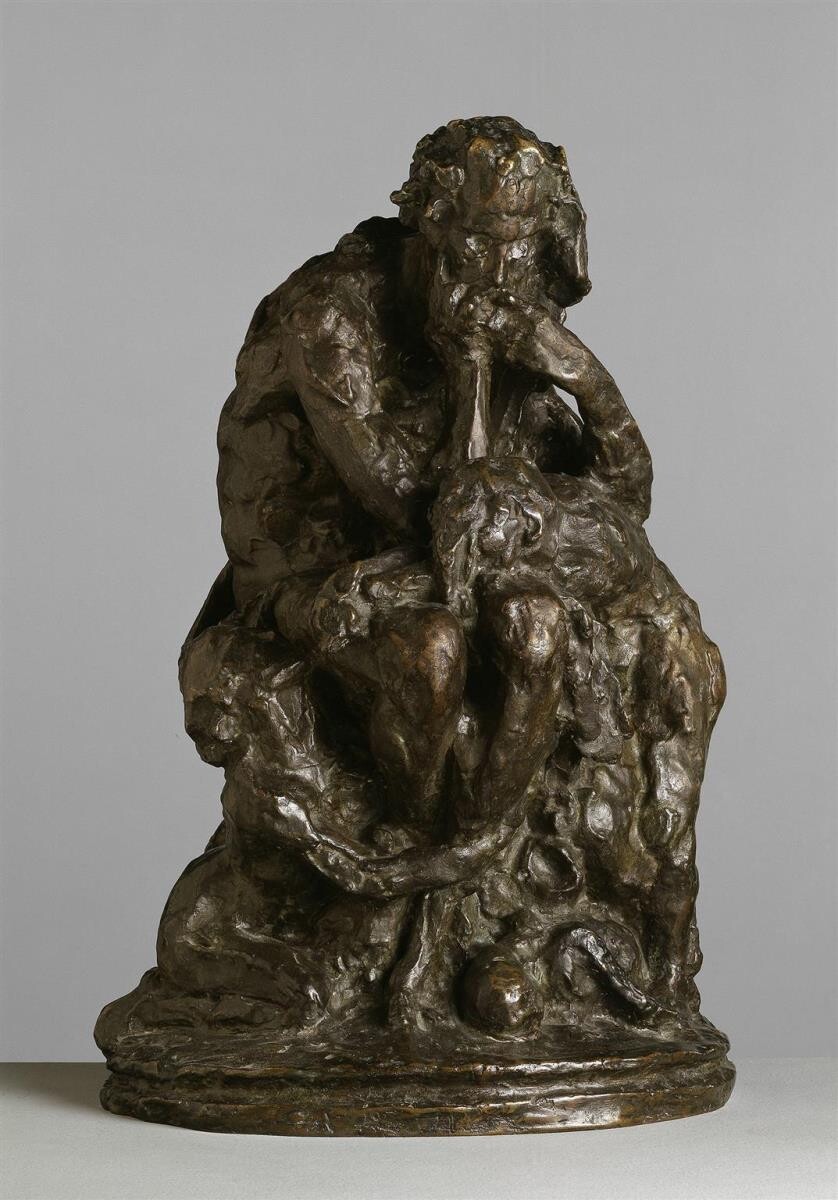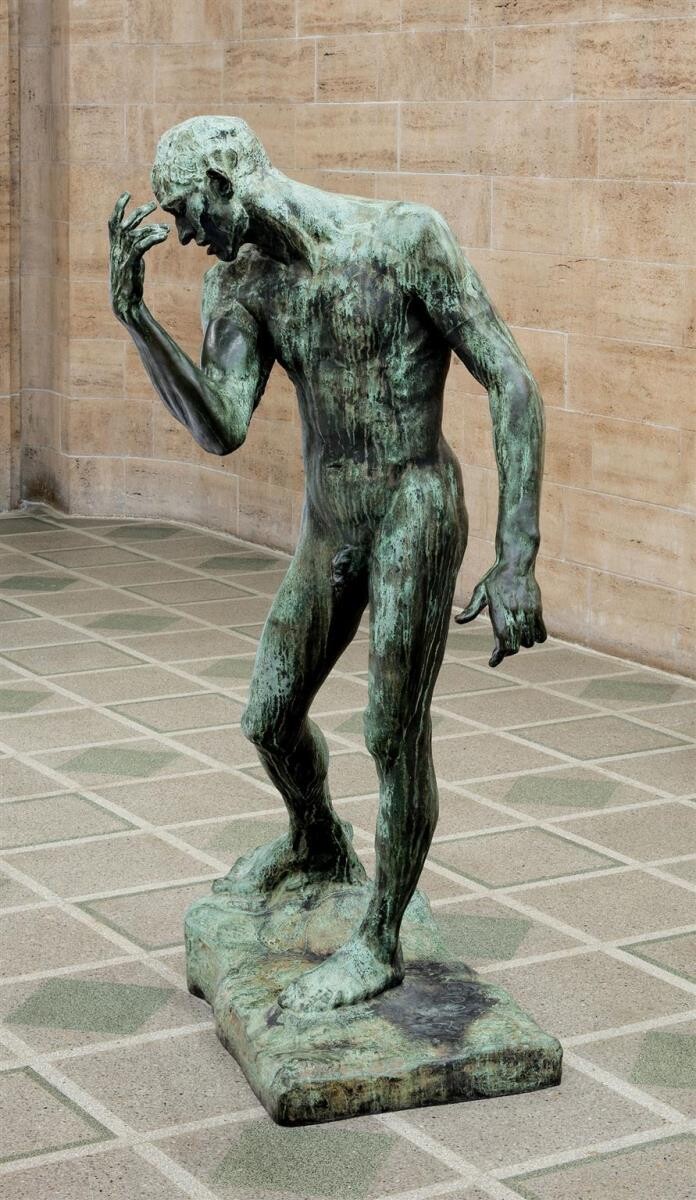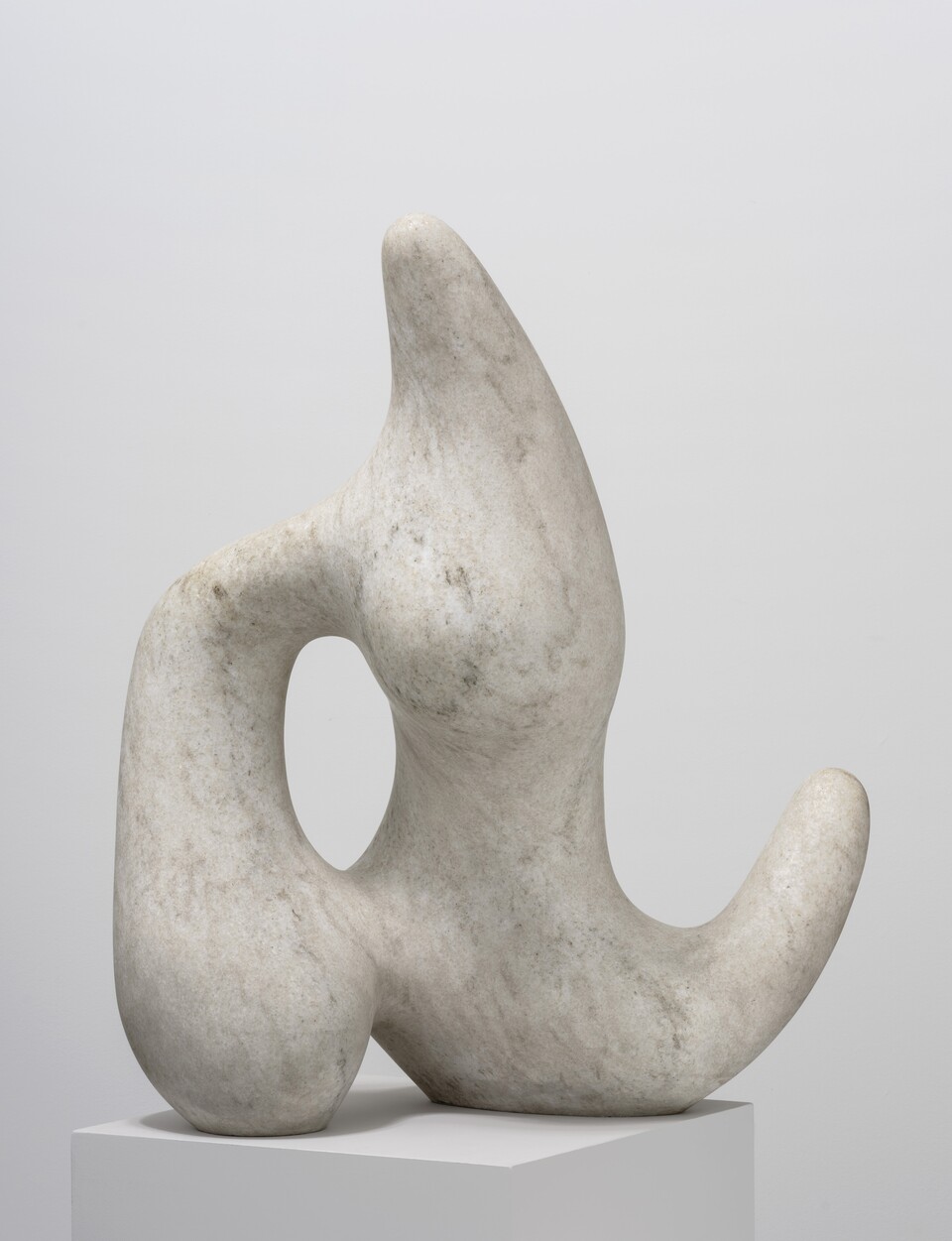Sculpture Collection
Head of Collection Sculptures
until 1960
Dr. Annabelle Görgen-Lammers
Head of Collection Sculptures, Installations and Environments
from 1960
Dr. Brigitte Kölle
The Sculpture Collection comprises over 6,500 three-dimensional works: from the »sculpture en miniature« (Alfred Lichtwark) in the form of outstanding art medals, plaques or coins from antiquity to the modern era, to high reliefs and full-round sculptures from the Middle Ages, the Baroque period, along with sculptures from Classicism, the Jugendstil, Impressionism and Symbolism of the 19th century, through to – in some cases monumental – modern sculptures, assemblages, objects and spatial ensembles of the 20th century.
The artworks result from highly diverse materials and working processes: they were carved in marble or stone, cast in bronze or copper, beaten in gold or embossed in silver, carved from wood, modelled in clay or plaster, moulded from paper or folded from sheet metal, found as objects or collaged in multimedia assemblages.
The holdings of the collection also span the largest time span of works in the museum, namely over 2,000 years of art history – from antiquity to 1960.
- Profile
The Sculpture Department was founded as early as 1891, based on a concept that was unique in Germany and beyond. Since then, it has been expanded for over 110 years under various directorships through targeted acquisitions and donations. As heterogeneous as the collection may be, it nonetheless contains outstanding individual positions and consistently structured groups of works which together present an overall picture encompassing all major artistic epochs:
In addition to prominent individual pieces such as a bust by Giovanni Lorenzo Bernini, the main accents of the late 18th- and early 19th-century sculptures lie in German Classicism with works by Johann Gottfried Schadow, Christian Daniel Rauch and Adolf von Hildebrand. Symbolism is represented with partly coloured and multi-material sculptures such as those by Max Klinger and Fernand Khnopff, and the (late) French 19th century is exemplified by major works by Jean-Baptiste Carpeaux and Auguste Rodin. Aristide Maillol’s partially monumental works – accompanied by the sculptor’s drawings – reflect the developments of the early 20th century. Modernism can be studied in impressive works by important artists such as Käthe Kollwitz, Ernst Barlach, Henri Matisse, Constantin Brancusi, Pablo Picasso, Max Beckmann and Alberto Giacometti, and likewise in special bodies of work by Wilhelm Lehmbruck, Germaine Richier and Hans Arp.
Among the approximately 6,000 small sculptures you will find remarkable coins from Greek and Roman antiquity, as well as Byzantine, medieval, modern, Islamic, Russian and Hamburg gems. Medallic art is represented with holdings from the Renaissance, Baroque and Classicism through to a focus on Art Nouveau and Impressionism, and also includes modern plaques, constituting a unique collection by even international standards.
Concerning the choice of motifs, it is portraits and depictions of animals that are most prominently represented in the Sculpture Collection, especially regarding the 19th-century works – similar to the collection of paintings and the Kupferstichkabinett. The first director of the Kunsthalle, Alfred Lichtwark (directorate 1886-1914), noted already in 1906: »Animals always exert the strongest attraction for the widest circle of museum visitors.« In line with this, he acquired entire groups of works featuring animals, for example, from the sculptors Anne Marie Carl-Nielsen and August Gaul. As a result, developments taking place in the 20th century also in these fields become particularly evident, such as the transition from portraits to masks, as suggested for example in Pablo Picasso’s Head of a Picador with a Broken Nose (1903), or the innovative experimentation with material, to be observed in Picasso’s The Owl (1952), or haptically appealing stylisations, as to be found in Ewald Mataré's animal depictions, and finally in metamorphoses occurring among beings, as in The Great Chess Game (1959/61) by Richier.
- History of the Collection
The Sculpture Collection is the third oldest in the museum, alongside the collection of paintings and the Kupferstichkabinett. In his inaugural speech in 1886, Alfred Lichtwark, the first director of the Hamburger Kunsthalle, announced the objective of building up a collection of »sculptures of noble material«, since: »It would hardly be worthy of a city like Hamburg to declare itself too poor to include sculpture in its public collection.« The young director's approach was ambitious, knowledgeable, internationally well-connected and – considering that no other German museum had yet established a collection of international contemporary sculpture – both unprecedented and pioneering. His commitment also went far beyond the museum walls to encompass the outdoor space, monuments and the decoration of parks.
What he initially had found in the Kunsthalle was a comprehensive collection of casts of masterpieces, some of which were larger than life, primarily from antiquity but also from the Renaissance period. Presented on the entire ground floor of the Hamburger Kunsthalle at the time, they embodied the artistic ideal of antiquity that prevailed when the museum was founded.
Selected coins and medals from the Renaissance likewise bore witness to Greek and Roman antiquity alongside those of other eras. These »sculptures en miniature« fascinated Lichtwark. Consequently, he expanded the collection of this smallest form of sculpture, »provided that in its essence it belongs to great art« (Lichtwark 1891): this occurred in often close contact with distinguished directors of the great international museums of his time, such as the Musée du Luxembourg in Paris, and also with up-and-coming sculptors and medallists. Lichtwark acquired the additions to the collection above all directly from German and French studios. The particularly innovative – mostly French – art medals formed the foundation for him to systematically and explicitly build up a collection from 1891 onwards: »The starting point for the sculpture collection consisted of an art genre that was to contribute new and inspiring ideas to the only field of sculpture that had been cultivated in Hamburg since the Renaissance, the modern medal and plaque.« (Lichtwark 1896)
During Lichtwark’s tenure, the Sculpture Department grew by over 150 full-round sculptures and some 1,000 plaques and medals. Regarding his acquisitions, he always considered his overall concept for the museum and consistently added graphic and photographic works by sculptors to the holdings, providing us with unique insights into their creative processes even today.
His extensive activities in collecting, exhibiting and lecturing on the sculpture of his time were further pursued and systematised by his successor, Gustav Pauli (directorate 1914-1933). He complemented the collection with, for instance, »some outstanding examples of Italian Renaissance medallions and [...] the remarkably well-chosen collection of antique coins« (Heise, 1948). However, as Carl Georg Heise (directorate 1945-1955) noted, under Pauli »and the subsequent directorates« sculpture had remained »the stepchild«. Heise himself, however, was able to acquire almost eighty works of German and European sculpture during his tenure. His successor Alfred Hentzen (directorate 1955-1969) was thus able to build on this collecting activity, adding important representatives of international art such as Hans Arp, Henri Matisse and Alberto Giacometti to the collection. Finally, Werner Hofmann (directorate 1969-1990) advanced the department with regard to the relevance of multi-materiality and the diversity of form, material and spatial experiences in the 20th century plastic arts through »multi-material explorations of the third dimension«, as practiced by Picasso: »The artists not only break the anthropomorphic rules of the game, they also defy the traditional canon of materials.« (Hofmann 1958)
- Current Developments
The department has been built up and expanded over 110 years through acquisitions and donations. In 2001, it was partially dissolved in view of a realignment and was subsequently no longer developed as such. Since mid-2024, the collection has been reunited under its new head.
An ongoing research, inventory and digitisation project initiated and led by the head of the collection is now for the first time systematically consolidating the historical basis for the development of the sculpture department: more than 6,000 coins and art medals are being recorded, examined and digitised in the scope of the project in order to make them accessible to the research community and the broad public in the future.
Based on further context-related research into how the various media are connected within the department and how they relate to the museum’s other graphic, photographic and pictorial holdings – along with the historical archive – the initial results of this extensive research project will be incorporated into a major new presentation of the collection from April 2026: the show will present sculptures of all dimensions and materials in juxtaposition with selected works from other areas of the collection. It will enable visitors to engage in the exciting »interstices« manifested in the realm of sculpture, the transitions between surface, object and space, the shifts between dimensions. The unprecedented display will invite the public to experience new object-related, corporeal and spatial phenomena on the entire ground floor of the original building.


